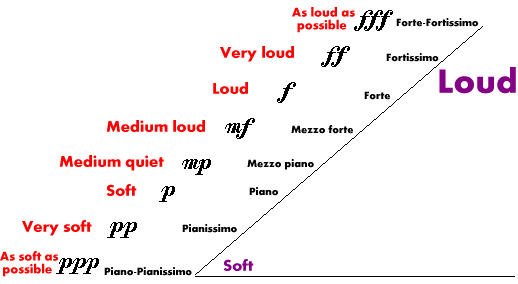Different marks help the player perform the written music:
Clefs
In the previous lesson we learnt that the clefs
show the pitch of central notes, and in this way the player can know the
pitch of every note.
Every clef refers to a different region of sound
(a register).
The treble clef - for the high notes - therefore it is used by women
singers and high-pitched instruments: 
The bass clef - for men singers and low-pitched instruments: 
Learn more about
the notes and clefs  
Tempo signs and indications
This is the speed sign, shown at the beginning
of the written piece. It indicates precisely the number of beats per minute
to which you should set the metronome, in order to direct the speed of
playing or conducting (in the following example, 120 beats per minute):

There are also
instructions in Italic
Click on the metronome in order to try
the different tempo markings 
Accidentals
The 'sharp' sign tells the performer to play a semitone higher. This
sign is valid for every identical pitch until the end of the measure:
The 'flat' sign tells the performer to play a semitone lower:
The 'natural' sign cancels the validity of a sharp or a flat before
it, or near the clef: 

Dynamics
We use signs as FF or P to show how loud or soft one has to play.
Here is a list of these signs:

This is a crescendo sign which means you have to gradually sing
or play louder 
This is a Diminuendo sign (also called de-crescendo) which
means you have to gradually sing or play softer

Repeat signs
A recap sign - tells you to repeat from the beginning unless
this sign appears unless
this sign appears and
then we repeat from this sign and on. and
then we repeat from this sign and on.

This sign indicates to return to the beginning and play till the place
marked 'Fine'

Other signs
The fermata indicates the performer to linger on the note above
which it is marked.

In the visual sign glossary, you can
locate different signs and learn their meaning:þ


MusixCool© By
Nadav Dafni
|